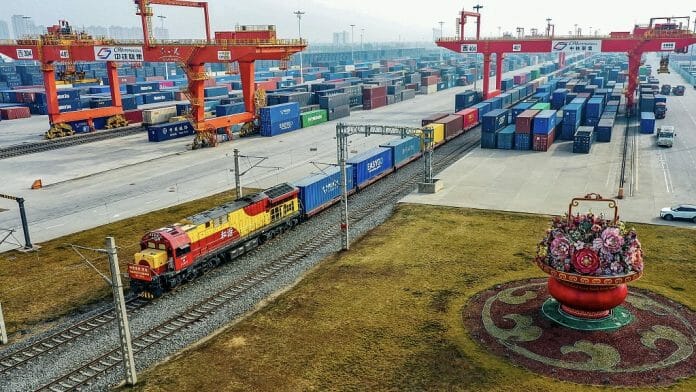China released its white paper on the ambition Belt and Road Initiative a brainchild of President Xi Jinping which was introduced to the world in 2013. After 10 years of mixed reviews among the international community, the PRC government shares more details about its progress and developments.
From 2013 to 2022, the cumulative value of imports and exports between China and BRI partner countries reached US$19.1 trillion, with an average annual growth rate of 6.4 percent. The cumulative two-way investment between China and partner countries reached US$380 billion, including US$240 billion from China.
Whereas, the value of newly signed construction contracts with partner countries reached US$2 trillion, and the actual turnover of Chinese contractors reached US$1.3 trillion. In 2022, the value of imports and exports between China and partner countries reached nearly US$2.9 trillion, accounting for 45.4 percent of China’s total foreign trade over the same period, representing an increase of 6.2 percentage points compared with 2013; the total value of imports and exports of Chinese private enterprises to partner countries exceeded US$1.5 trillion, accounting for 53.7 percent of the trade between these countries over the same period.
China said by the end of August 2023, more than 80 countries and international organisations had subscribed to the Initiative on Promoting Unimpeded Trade Cooperation Along the Belt and Road, proposed by China. China has signed 21 free trade agreements with 28 countries and regions. On January 1, 2022, the Regional Comprehensive Economic Partnership (RCEP) agreement entered into force, creating the world’s largest free trade zone in terms of population size and trade volume. The RCEP and the BRI overlap and complement each other in terms of participating countries and regions, as well as areas and contents of cooperation, forming a new dynamic of economic and trade cooperation in Asia.
It is also working actively towards joining the Comprehensive and Progressive Agreement for Trans-Pacific Partnership and the Digital Economy Partnership Agreement.
By the end of June 2023, China had signed agreements on industrial capacity cooperation with more than 40 countries. China Mining Conference & Exhibition and China-ASEAN Mining Cooperation Forum & Exhibition serve as important platforms for participating countries to conduct mining capacity cooperation.
The Shanghai Cooperation Organisation (SCO) Demonstration Base for Agricultural Technology Exchange and Training has supported advances in agricultural science and technology under the BRI, and promoted economic and trade cooperation in agriculture among participating countries.
Jointly constructed by China and Pakistan, the K2 and K3 units of the Karachi Nuclear Power Plant have been completed and are in operation, utilizing China’s Hualong One nuclear technology.
Other areas include the China-ASEAN Forum on Peaceful Uses of Nuclear Technology has served as a bridge to establish connectivity, enabling BRI participating countries to cooperate on nuclear technology and promote growth and people’s wellbeing.
More than 70 overseas industrial parks have been built by Chinese enterprises together with governments and enterprises in partner countries. The China-Malaysia and China-Indonesia “Two Countries, Twin Parks” projects, the China-Belarus Great Stone Industrial Park, the China-UAE Industrial Capacity Cooperation Demonstration Zone, and the China-Egypt TEDA Suez Economic and Trade Cooperation Zone are making steady progress









